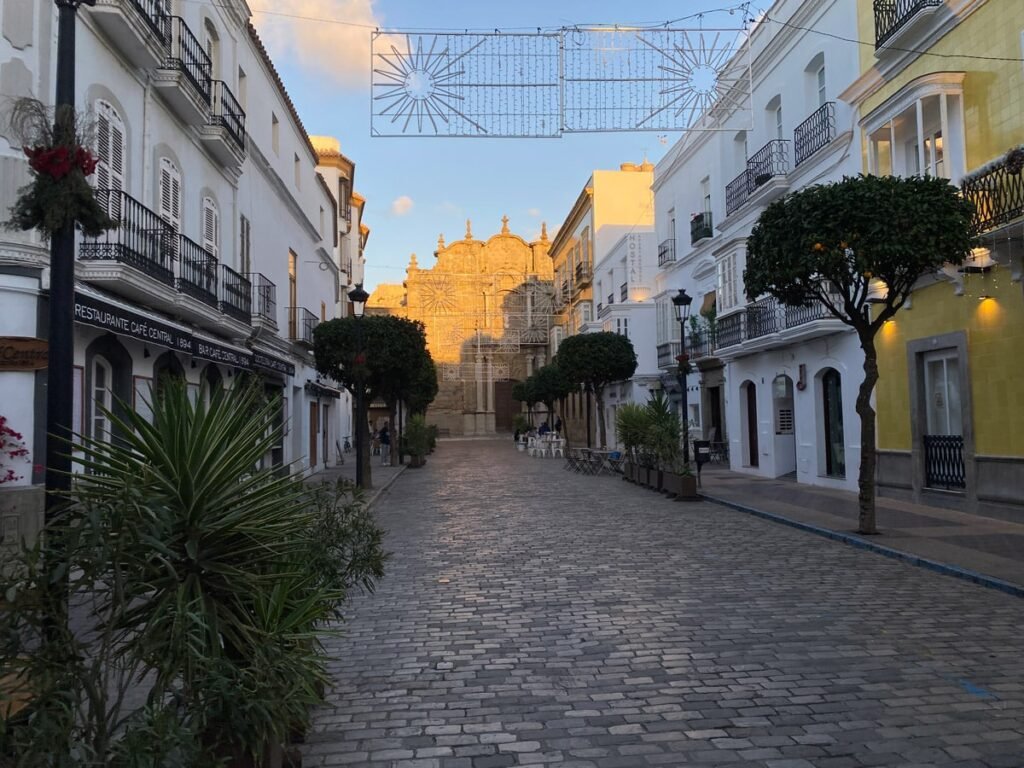Traveling from the UK to Morocco without flying may seem like a daunting task, but it is one of the most straightforward and sustainable options for reaching another continent. With the increasing availability of ferries from Spain to Morocco and numerous ways to reach mainland Europe from the UK without flying, this journey has become more accessible than ever before. For those who are conscious of their carbon footprint or simply want to experience a unique overland adventure, this route provides a fantastic alternative to air travel.
Why Consider Traveling to Morocco Without Flying?
Choosing to travel without flying offers a number of benefits, not the least of which is a reduced environmental impact. Air travel is one of the most significant contributors to carbon emissions, and by opting for trains, buses, and ferries instead, you can significantly lower your carbon footprint. Additionally, overland travel allows you to experience the journey itself as part of the adventure. Whether it’s a scenic train ride through the French countryside or a ferry crossing over the Strait of Gibraltar, each leg of the trip adds to the overall experience, making the journey to Morocco just as memorable as the destination itself.
Planning the Journey: Routes and Options
The journey from the UK to Morocco can be broken down into several stages, each with various options depending on your budget, time constraints, and preferred mode of travel.
Stage One: UK to Spain by Train, Bus, or Ferry
Your first challenge is getting from the UK to Spain, the gateway to Morocco. There are several ways to accomplish this, each with its own pros and cons.
By Train (Quickest and Most Comfortable):
The most straightforward and comfortable option is to take the train. Start with an early Eurostar from London to Paris. This leg of the journey is particularly smooth, as border controls are handled before you board the train in London, meaning you can disembark in Paris without any additional checks. Once in Paris, you’ll need to transfer to another station to catch a TGV train to Barcelona. The journey from Paris to Barcelona takes around seven hours, so if you catch an early Eurostar, you can be in Barcelona by evening.
From Barcelona, Spain’s high-speed train network can take you further south. For example, you can travel from Barcelona to Madrid in under three hours and then from Madrid to Seville in another two and a half hours. From Seville, a bus ride of about three hours will bring you to the coastal town of Tarifa, where ferries depart for Morocco.
By Bus (Cheapest but Longest):
For those on a tighter budget, traveling by bus is the most economical option. Companies like FlixBus and National Express offer routes from London to Paris, often involving an overnight journey. From Paris, you can continue by bus to various cities in Spain, though this method can be time-consuming and less comfortable than the train.
Once in Spain, you’ll need to make your way to one of the ferry ports, such as Tarifa or Algeciras, to catch a ferry to Morocco. While the bus option is cheaper, it does require more time and patience, as you’ll be spending a significant amount of time on the road.
By Ferry (A Unique Experience):
Another option is to take a ferry from the UK to Spain. Ferries depart from ports like Portsmouth or Plymouth and arrive in northern Spain, such as Santander or Bilbao. While this option is less common and can be more expensive, especially when considering cabin costs for the overnight journey, it offers a unique experience of crossing the Bay of Biscay by sea. However, once in northern Spain, you will still need to travel across the country to reach a southern port like Tarifa or Algeciras, adding to the travel time and expense.
Stage Two: Crossing from Spain to Morocco by Ferry
Once you’ve made it to Spain, the next stage is crossing the Strait of Gibraltar to reach Morocco. There are several ferry routes available, each with different durations and prices.
Tarifa to Tangier (Quickest and Most Convenient):
The fastest and most convenient option is the ferry from Tarifa to Tangier. This crossing takes about an hour and delivers you right into the heart of Tangier, within walking distance of the historic medina. Ferries on this route are operated year-round by companies like FRS Ferries and InterShipping.
This route is particularly popular because it’s the shortest crossing between Europe and Africa, making it the quickest way to get to Morocco. The ferry departs several times a day, so you have flexibility in planning your journey. However, be aware that weather conditions can occasionally cause delays or cancellations, especially during the winter months.
Algeciras to Tangier Med (Alternative Option):
Another option is to take the ferry from Algeciras to Tangier Med, which is slightly longer and lands you outside the city center. Tangier Med is about 40 kilometers from Tangier proper, so you’ll need to arrange transportation from the port to the city. While this route might require a bit more logistical planning, it can be useful if you’re traveling with a vehicle or if the Tarifa route is fully booked.
Gibraltar to Morocco (For Those Wanting a British Touch):
For a unique twist, you can depart from Gibraltar, the British Overseas Territory located near Algeciras. However, ferry services from Gibraltar to Morocco are less frequent and can be more sporadic, especially in the off-season. If you want to explore Gibraltar as part of your journey, this could be an interesting option, but it requires careful planning to align with ferry schedules.
Alternative Ferry Routes:
There are other ferries that operate from different parts of Spain to Morocco, such as from Barcelona to Tangier Med or Nador. These routes are generally longer and more expensive, but they might be worth considering if you’re starting from or passing through these areas. For instance, GNV offers overnight sailings from Barcelona, which take around 36 hours. While the journey is long, it provides an opportunity to rest and enjoy the sea before arriving in Morocco.
Stage Three: Onward Travel in Morocco
Upon arriving in Morocco, you’ll likely want to travel beyond Tangier to explore other cities and regions. Fortunately, Morocco has a relatively well-developed transportation network, making it easy to continue your journey.
By Train:
Morocco’s train system, operated by ONCF, is efficient and comfortable. The high-speed Al Boraq train connects Tangier to Casablanca in about two hours, with further connections available to Marrakech. This is the fastest and most comfortable way to travel between major cities in Morocco.
By Bus:
If you’re heading to more remote areas or smaller towns, buses are a good option. The two main bus operators in Morocco are CTM and SupraTours, both of which offer reliable services across the country. Buses are a good option if you’re traveling to places like Chefchaouen, which isn’t directly accessible by train.
By Grand Taxi:
For shorter journeys or more flexible travel, consider using a Grand Taxi, a shared taxi service that operates between towns and cities. This can be a quicker alternative to buses, especially for reaching destinations not served by trains.
Additional Tips and Considerations
Immigration and Customs:
When traveling from Spain to Morocco, you’ll go through immigration control onboard the ferry. Make sure to get your passport stamped during the crossing, as you’ll need this stamp when you disembark in Morocco. British passport holders don’t require a visa for stays of up to 90 days in Morocco, but you should ensure your passport meets all the necessary requirements, such as having at least six months of validity.
Time Differences:
Keep in mind the time differences between the UK, France, Spain, and Morocco, especially when planning your connections. Morocco doesn’t observe daylight saving time, so there can be a time difference with Spain depending on the time of year. During Ramadan, Morocco may adjust its clocks by an hour, so be sure to check the local time before your departure.
Weather Conditions:
While ferry services operate year-round, adverse weather conditions, particularly in the winter, can lead to delays or cancellations. It’s a good idea to check the weather forecast and stay flexible with your plans if possible.
Conclusion: The Joy of a Slow Journey
Traveling from the UK to Morocco without flying offers a unique and rewarding experience that allows you to appreciate the journey as much as the destination. Whether you choose to take the train, bus, or ferry, each leg of the trip adds to the adventure, offering scenic views, cultural encounters, and a slower pace of travel that is all too rare in our fast-paced world. By opting for this sustainable travel option, you’re not only reducing your environmental impact but also embracing the joy of slow travel, where every moment is part of the adventure.


